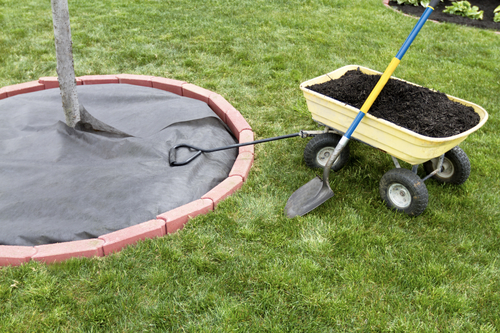Determining the Right Time to Mulch
DLaying mulch not only improves the appearance of your landscape but it also has several other benefits. It minimizes weed growth and helps moisture retention, hence making your plants stay strong and healthy. It also acts as a good insulator thus regulating temperatures depending on the season. You can also curb soil erosion and plant damage during mowing through mulching. As mulching material decay, it adds nutrients to the soil.
Right mulching time

Knowing the right time to mulch will help you enjoy all the benefits that comes with the exercise. Many people have the tendency of mulching as soon as the spring sets since it’s one way to improve the appearance of the landscape. However, mulching as soon as the warm season starts is not advisable. You need to give the soil some time to acquire warmth, hence making mid-to late spring the right mulching time. If you had laid winter mulch, pull it off gradually to help the plants adapt to the warmth. Pulling it all at one can subject the plants to late-season cold.
How much mulch should you lay?
It is advisable you start by laying a thin layer of mulching material so as to give your seedlings the space to grow. As the plants get established, you can increase mulching material accordingly. You should put more mulch during summer to help retain soil moisture and provide insulation from cold during winter.
Determining the right amount of mulching material can be tricky. This is because you don’t want to lay too little material that you leave the plants exposed or too much that it kills the plants. You can determine the right amount depending on the type of mulching material you want to use. If you are using a fine material, then 1 to 2 inch layer should be fine, when 3 to 4 inch should be fine when laying coarse material. If your intentions are to prevent anything from growing in an area, then you can lay as much material as you want.
Laying too much mulching material results in the plant roots growing with the material hence a shallow rooting system. This makes your plants susceptible to damage by drought and cold weather. You can avoid this by putting a moderate layer depending on the type of your crops. When mulching an area with trees, you need to leave a space between the tree trunks and stem so as to prevent them from rotting. Leaving space also ensures that pests such as slugs and mice don’t get a habitat or destroy your plants.
When putting mulch, you need to put in consideration the style of the area. For instance, if it is the pathway, a windy area, or a slope hence susceptible to erosion, you should put heavy mulching materials. The size of the mulching material should also help you determine the depth of the layer. If you are using big chunks, then the layer should be deep, but if you are using small material, then the layer should be shallow. Contact us for more information.
Tagged: lawn care
Both comments and pings are currently closed.





